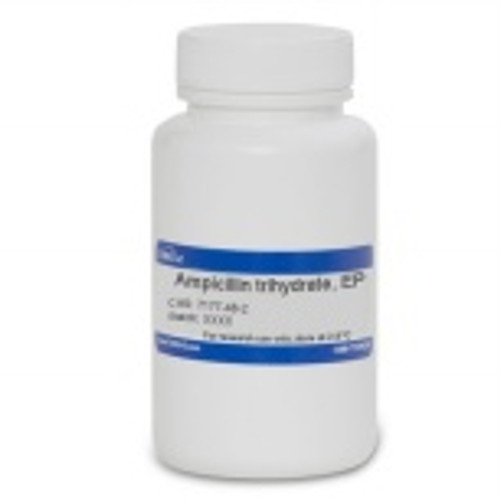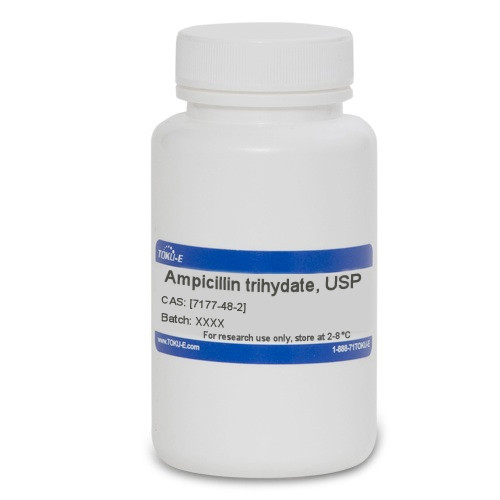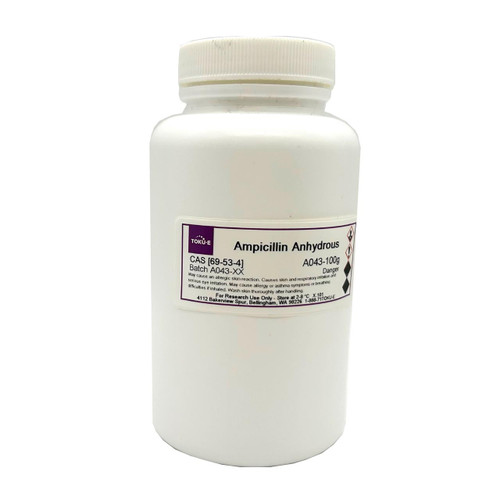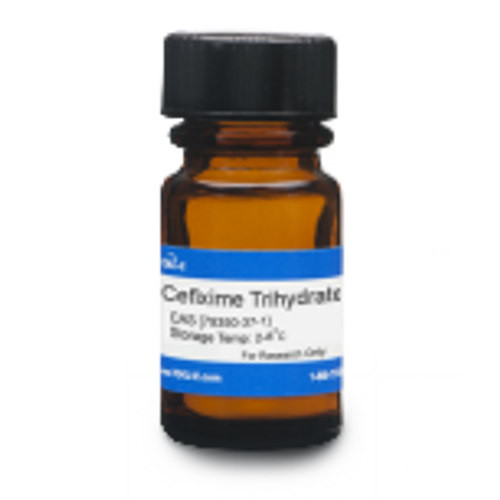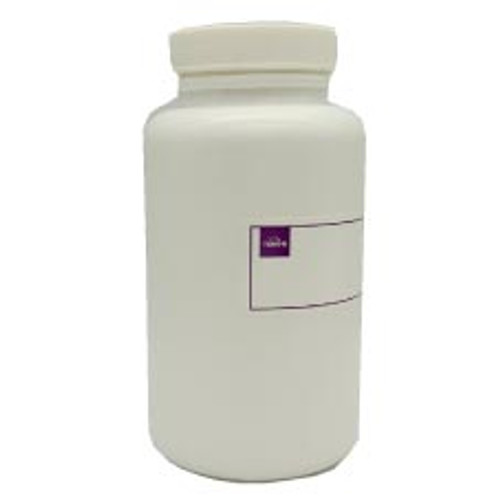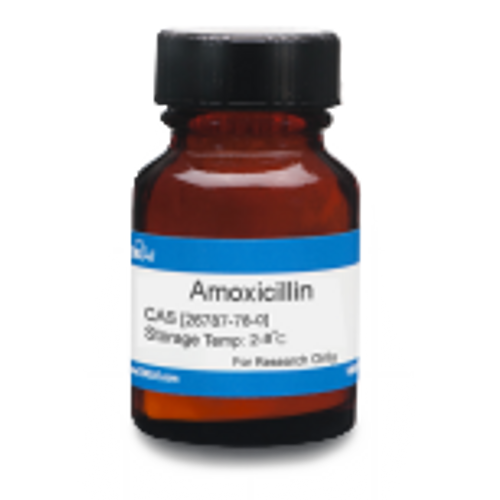Ampicillin Trihydrate, EP is a member of the β-lactam family and is similar in structure to penicillin. It can be used to select for ampicillin resistance in transformation experiments.
Ampicillin Trihydrate is slightly soluble in water and soluble in 1 N HCl.
We also offer:
- Ampicillin Trihydrate, USP (A009)
- Ampicillin Sodium (A042)
- Ampicillin Anhydrous (A043)
- Ampicillin/Sulbactam (2:1) (A071)
| Mechanism of Action | Like all β-lactams, Ampicillin Trihydrate interferes with PBP (penicillin binding protein) activity otherwise involved in the final phase of peptidoglycan synthesis. PBP’s are enzymes which catalyze a pentaglycine crosslink between alanine and lysine residues. Without a pentaglycine crosslink, the integrity of the cell wall is severely compromised ultimately leading to cell lysis. |
| Spectrum | Ampicillin Trihydrate, EP targets non-ESBL (Extended Spectrum β-lactamase) bacteria including Staphylococcus and Streptococcus species and medically important enteric pathogens such as Shigella and Salmonella. Interestingly, ampicillin has been found to be effective against certain β-lactam sensitive VRE or vancomycin resistant Enterococcus; a glycopeptide antibiotic resistant "superbug." Resistance to ampicillin is routinely utilized as a selectable marker to confirm successful cell transformation. |
| Microbiology Applications | Ampicillin Trihydrate is often used to select for cells that have been transformed with a plasmid containing the ampR gene which confers resistance to Ampicillin.
Media SupplementsAmpicillin Trihydrate can be used as a selective agent in several types of isolation media: Aeromonas Medium Base - Ampicillin Selective Supplement |
| Eukaryotic Cell Culture Applications | Ampicillin is routinely used to select for cells containing the pcDNA3.1 and pEAK10 resistance plasmids in cell line A904L at an effective concentration of 50 µg/mL. For additional information on your cell culture needs, please visit our cell-culture database. |
| Molecular Formula | C16H19N3O4S·3H2O |
| Solubility | Slightly soluble in water (10 mg/mL) and freely soluble in 1 N HCl (50 mg/mL) |
| Impurities | Dimethylaniline: ≤20ppm Related Substances: ≤1.0% |
| References |
Pitout JD, Sanders CC, Sanders WE (1997) Antimicrobial resistance with focus on beta-lactam resistance in Gram-negative bacilli. Am. J. Med 103(1):51-59 PMID 9236486 Waxman DJ and Strominger JL (1983) Penicillin-binding proteins and the mechanism of action of beta-lactam antibiotics. Ann. Rev. Biochem 52:825-869 PMID 6351730 Yang W, Zhang L, Lu Z, Tao W, Zhai Z (2001) A new method for protein coexpression in Escherichia coli using two incompatible plasmids. Protein. Expr. Purif. 22(3):472-478 PMID 11483011 |
| MIC | Diplococcus pneumoniae| 0.01 - 0.04| 1413| Haemophilus influenzae| 0.04 - 0.8| 1413| Neisseria gonorrhoeae (penicillin-resistant)| 4 - 128| 1408| Neisseria gonorrhoeae (penicillin-susceptible)| 0.008 - 0.25| 1408| Stenotrophomonas maltophilia| >32 - ?| 938| |

